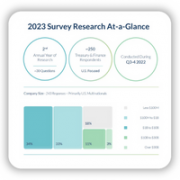Currency Volatility Is A Catalyst for Response by Treasury
15-12-2021 | treasuryXL | Kyriba | LinkedIn |
The Q2 2021 Kyriba Currency Impact Report showed a strong tailwind for many US corporates driven in large part by the strengthening of two main trading currencies for many US corporates, EUR and GBP.
Both currencies strengthened steadily through Q2 2021, but currencies have since retreated through Q3 2021, setting up a return of relatively strong headwinds for the Q3 earnings season.
As we look forward to Q3 and Q4 currency impacts, it is very likely we will see increased levels of negative currency impacts for North American and European corporates as a result of continued business activity expansion combined with the return of a stronger USD and general market uncertainty. The recent impact of the newest COVID variant, Omicron, has also added a new level of uncertainty-driven volatility and questions about how businesses and central banks will respond.
Beyond the general level of market uncertainty there are a few other economic and operational challenges that are adding to the complexity of managing currency risk and liquidity. With inflationary conditions starting to take hold in the US and other parts of the world, Treasurers and CFOs are having to contend with increasing supply chain costs. In addition, the supply chain disruptions are increasing the uncertainty of business operations. Many treasury teams are far less confident in their long-term cash flow forecasts which has many reconsidering their hedging and liquidity needs.
How are Corporate Risk Managers responding to the currency markets and supply chain disruptions?
Treasury teams are faced with a complex set of variables in the current market environment. Their long-term cash flow forecasts are less and less reliable due to uncertainty related to supply chain disruptions. The disruptions are impacting both the supply side and the revenue side of the forecasts. There is increased uncertainty around both the value and timing of supply chain cash out flows. On the revenue side, there is also uncertainty around the value and timing of future inflows as manufacturers are having a hard time getting products on the shelves. In addition, the currency markets are adding to the complexity as the USD is strengthening or at least holding strong against a broad basket of currencies.
As a result, many treasury teams are re-focusing on the things they can control. Daily and even intra-day cash position monitoring is the norm now and combining that with an increased focus on FX hedging for working capital positions on the balance sheet are critical best practices to ensure treasury teams have the right amount of cash in the proper currency at the right time to cover vendor and supplier payments and ensure they maintain a strong liquidity position as they ride out the supply chain storm.
Another challenge FX risk managers are having to contend with is the by-product of improper posting of multi-currency transactions within their ERP system(s). When volatile currency markets are creating significant directional moves in various currency pairs, it often uncovers multi-currency accounting posting mistakes as well as missed exposures. This missed exposures and improper accounting postings can results in very surprising results that often create significant FX losses. The most frustrating aspect of these types of FX impacts is that they are entirely self-inflicted. With proper Exposure Data Integrity Analytics and robust and dynamic exposure capture processes, these self-inflicted currency impacts can be anticipated and avoided.
Ultimately, Treasury teams that can monitor and manage their liquidity and working capital FX exposure in a single integrated platform have a distinct advantage in the current market.















